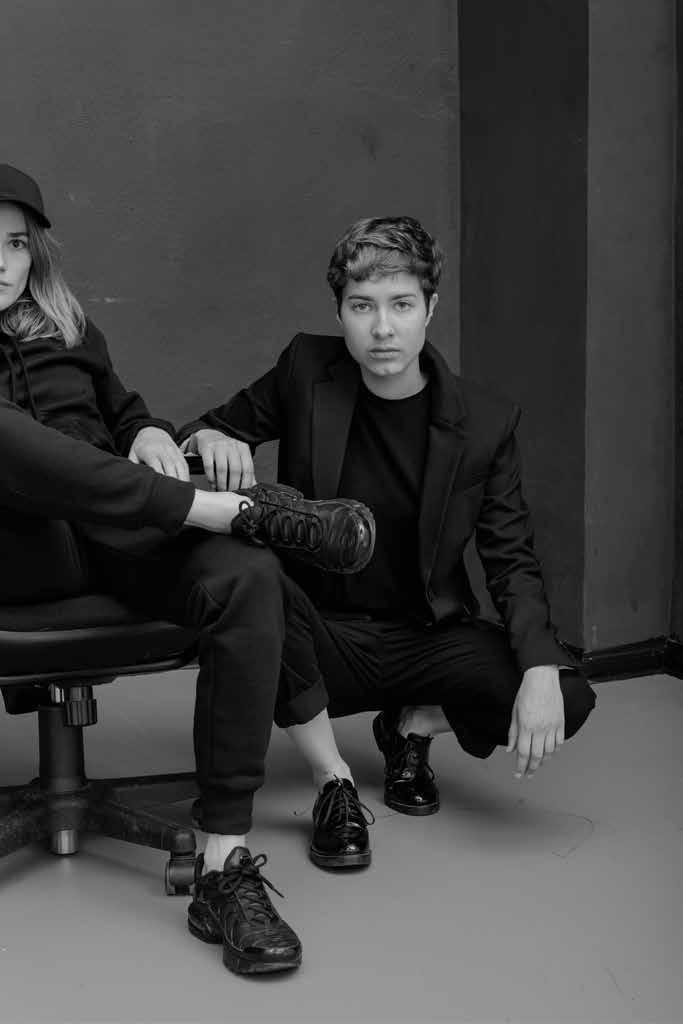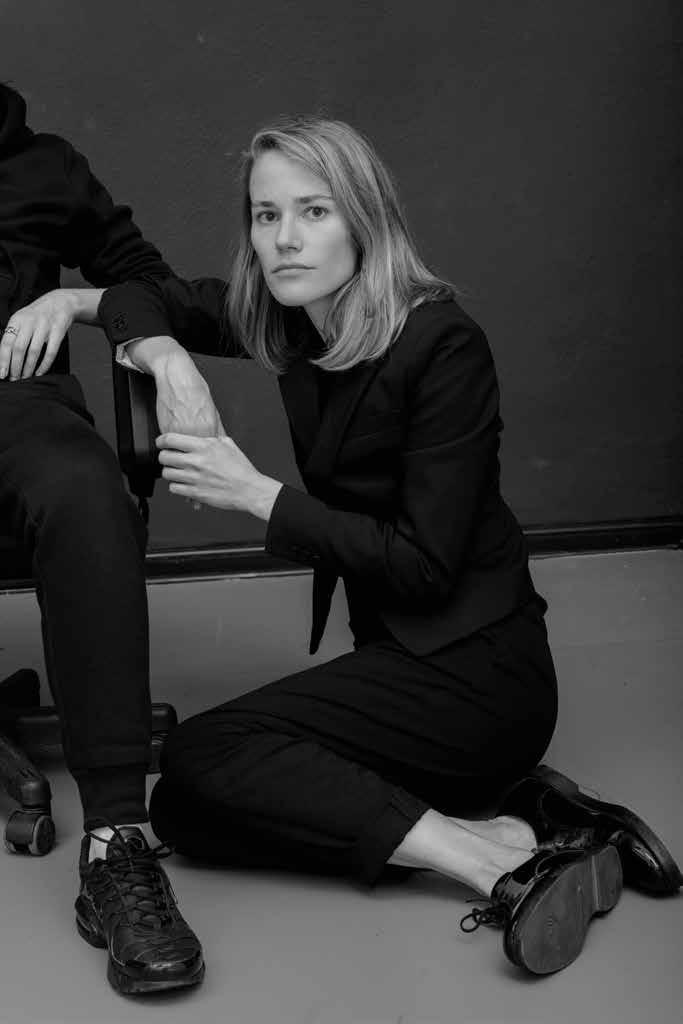Andrzej Steinbach
Society Starts With Three
Kunsthalle Wien crowned their 2018 dramaturgy with the exhibition project Antarctica, tackling the sociological term “alienation,” prominently present in the work of Michelangelo Antonioni, whose quote about moving glaciers opened the whole show. Antarctica focused on photography and film, as media seemingly holding a privileged relation to reality, yet proving how wide a gap between the depicted and its real context could be. Andrzej Steinbach’s work was represented by a segment of his series Gesselschaft beginnt mit drei (Society Starts With Three) from 2017, relating in its title to an essay by the German sociologist Ulrich Bröckling. According to him, the binary of “us” and “them” is since postmodernity undermined by a third position which “mutates from troublemaker to an often emphatical guarantor of an aesthetically absorbed diversity or serves as the starting point for specific identity politics.” Antarctica presented the works of participating artists in an abstracted, yet still relatively literally staged environment, resembling a wasteland of endless wild plains of the realm of glaciers with implemented traces of post-industrial ruins of the era of late-capitalism. This allusion to nature most of us know only from high- definition images on pages of glossy magazines or from technically highly sophisticated documentaries and has much in common with the work of Andrzej Steinbach. His approach to the nowadays much critical topic of identity politics is mostly utilizing a traditional medium of a photographic portrait, realistic representation of a human body staged either in private or public surroundings. The testimonial value of these images is highly uncertain though. His figures could be possibly identified by their garments or items accompanying them, yet their status remains ambiguous, making the viewer somehow lost in meaning. Three women from his series of photographs exchange their dresses, postures, and expressions with each new shot; some remain visible, some are pushed to the background outside of view. Any attempt to construct a narrative or to understand what we are witnessing is doomed to failure. These highly stylized scenes could come from a fashion magazine editorial, yet their unsettling character proves the reality must be entirely different. Just as the architecture of the show provides a glimpse into something highly familiar, at the same time unreachable and truly theatrical, these photographs play with a very similar strategy. The ostensibly outdated concept of alienation finds a new urgency for our post-truth era, making it as relevant as back when Monica Vitti walked the empty streets of the newly built Italian cities during the economic miracle of the 1960s.








#33 investigation
Archive
- #45 hypertension
- #44 empathy
- #43 collecting
- #42 food
- #41 postdigital photography
- #40 earthlings
- #39 delight, pain
- #38 death, when you think about it
- #37 uneven ground
- #36 new utopias
- #35 living with humans
- #34 archaeology of euphoria
- #33 investigation
- #32 Non-work
- #31 Body
- #30 Eye In The Sky
- #29 Contemplation
- #28 Cultura / Natura
- #27 Cars
- #26 Documentary Strategies
- #25 Popular Music
- #24 Seeing Is Believing
- #23 Artificial Worlds
- #22 Image and Text
- #21 On Photography
- #20 Public Art
- #19 Film
- #18 80'
- #17 Amateur Photography
- #16 Photography and Painting
- #15 Prague
- #14 Commerce
- #13 Family
- #12 Reconstruction
- #11 Performance
- #10 Eroticon
- #9 Architecture
- #8 Landscape
- #7 New Staged Photography
- #6 The Recycle Image
- #5 Borders Of Documentary
- #4 Intimacy
- #3 Transforming Of Symbol
- #2 Collective Authorship
- #1 Face
